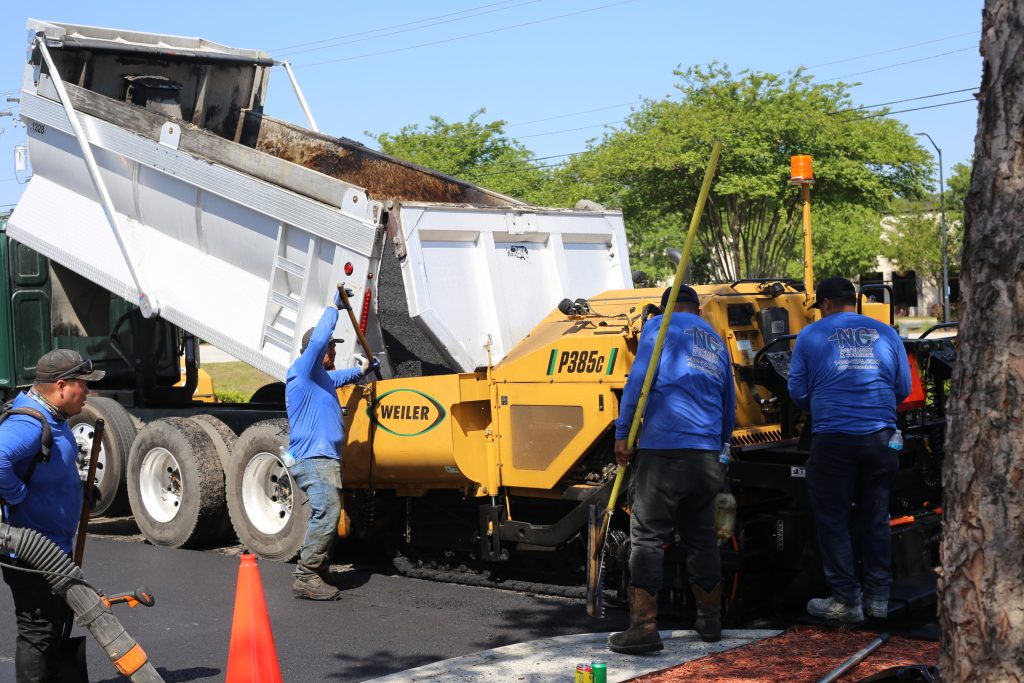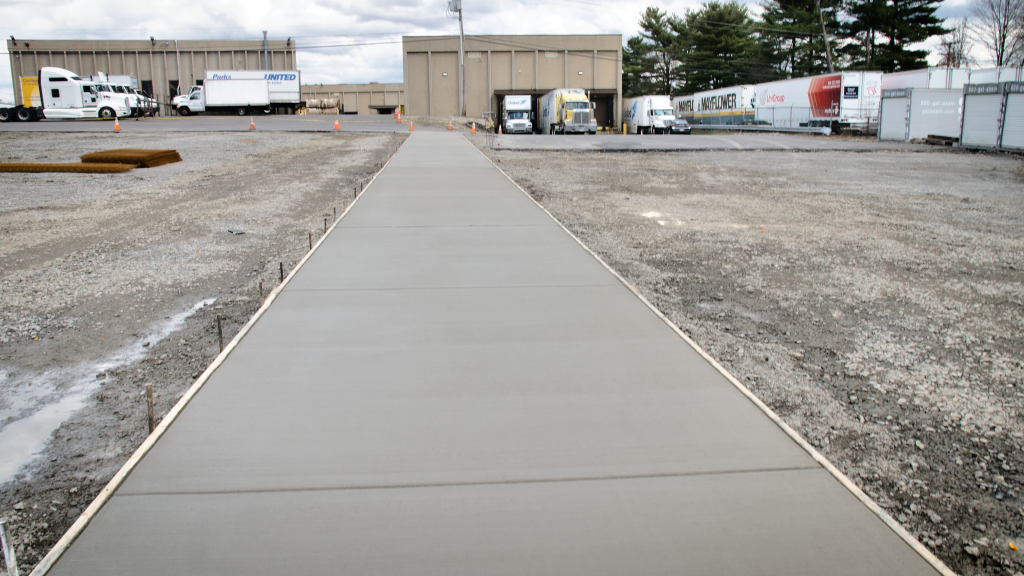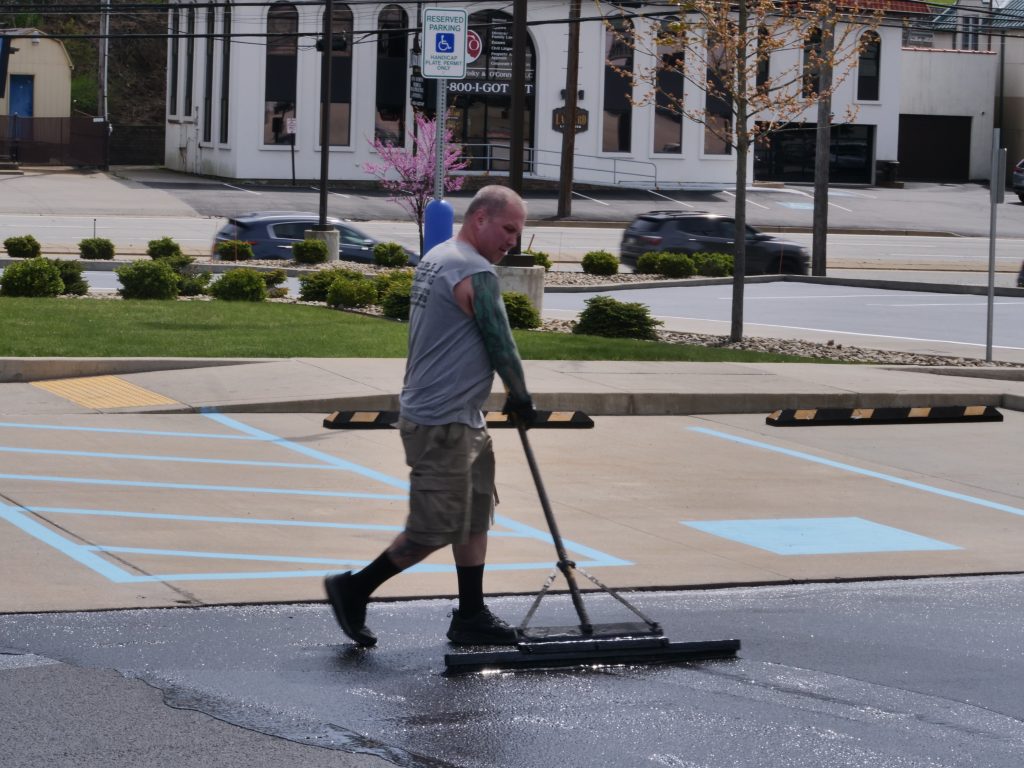A parking lot renovation for retail centers can make or break the customer experience. While upgrades are essential for safety and curb appeal, poorly planned projects can drive customers away. That’s why planning every detail matters. At The Pavement Group, we understand how to balance construction efficiency with business continuity.
Cracked asphalt, faded lines, and potholes send the wrong message. A well-executed renovation transforms first impressions, ensures safety, and maintains steady traffic flow.
So, how can you improve your property without losing loyal customers? Let’s break it down step by step.
Why Parking Lot Renovations Matter for Retail Centers
A smooth, well-marked parking lot shows customers you care about their safety and comfort. It reflects your brand’s professionalism before any purchase happens. According to the National Retail Federation, customers often judge a business by its exterior maintenance.
Beyond aesthetics, damaged pavement can lead to accidents and liability risks. Water pooling, uneven surfaces, and potholes can cause costly injuries or vehicle damage. A timely renovation prevents these issues while extending the life of your asphalt.
Step 1: Assess the Condition of Your Current Lot
Before scheduling any work, conduct a thorough inspection of your existing lot. Look for cracks, fading, drainage issues, and structural damage. A professional pavement assessment helps determine whether you need resurfacing, patching, or a full replacement.
The Pavement Group uses advanced technology to analyze wear patterns and sub-base conditions. This ensures your renovation plan addresses both surface and structural concerns. A detailed evaluation saves time and money in the long run.
Step 2: Schedule Work During Off-Peak Hours
Timing is everything when it comes to retail renovations. Plan work during off-peak hours, such as early mornings or overnight shifts. This reduces disruption and keeps your customers happy.
For multi-day projects, divide the parking lot into sections. Keep some areas open while crews work on others. Proper scheduling allows for continuous access and minimizes inconvenience.
Communication is key. Use signage and social media updates to keep visitors informed of temporary changes. Transparency builds trust even during construction.
Step 3: Prioritize Safety and Accessibility
Safety should always be at the forefront of your renovation plan. Clearly mark construction zones and reroute traffic with visible barriers and cones.
Temporary walkways, ramps, and signage help maintain ADA compliance. Customers appreciate businesses that consider their convenience during renovations.
Professional paving contractors ensure that site safety measures meet regulatory standards. At The Pavement Group, we take pride in protecting both your customers and your reputation.
Step 4: Choose High-Quality Materials and Techniques
Quality materials determine how long your renovated lot will last. Cheap asphalt may save money upfront, but it leads to faster deterioration. Choose durable mixes designed for heavy retail traffic.
Consider asphalt milling and overlay, which provide a fresh surface while preserving your existing base. For extensive damage, full-depth reclamation might be the smarter long-term choice.
Modern sealcoats and line striping enhance durability and visual appeal. High-contrast markings improve safety and navigation for shoppers. Investing in quality ensures fewer repairs down the road.
Step 5: Maintain Brand Image During Construction
A construction site doesn’t have to look chaotic. Simple branding efforts, like temporary banners or directional signs, can reinforce your identity during renovations.
Use messages that communicate improvement rather than disruption. For example, “Exciting upgrades underway to serve you better!” Customers respond positively when they understand the value behind the inconvenience.
Step 6: Plan Efficient Traffic Flow
Retail centers depend on steady vehicle movement. During renovations, establish clear entry and exit routes to avoid confusion.
Use temporary directional arrows, cones, and digital maps to guide drivers safely. Assign staff or security to assist with traffic control during peak hours.
Strategic planning reduces congestion and maintains a pleasant shopping experience. The Pavement Group designs traffic flow strategies that balance safety and accessibility.
Step 7: Communicate with Tenants and Shoppers
Consistent communication prevents frustration and misunderstandings. Notify retail tenants weeks before work begins. Provide a clear timeline and updates on progress.
For customers, share renovation schedules on your website, social media, and on-site signage. Let them know what to expect, and thank them for their patience.
When people feel informed, they’re more understanding and loyal. Good communication turns inconvenience into collaboration.
Step 8: Schedule Regular Maintenance After Renovation
Once your parking lot is complete, maintenance becomes the key to longevity. Schedule annual inspections to address cracks, oil stains, or drainage concerns early.
Sealcoating every few years preserves your investment and keeps your surface looking sharp. Regular line striping ensures clear navigation and enhances safety.
Testimonials
“Flawless Work from Start to Finish!”
“Our parking lot renovation went smoother than expected. The project was on time, clean, and professional. Our customers noticed the difference immediately!” — Rachel P., Retail Property Manager, Birmingham, AL
“A Partner We Can Rely On.”
“We renovated two retail locations, and both projects exceeded expectations. The team kept us informed at every stage.” — Tony M., Shopping Center Owner, Auburn, AL
“Zero Customer Complaints!”
“The renovation was done overnight and organized perfectly. We didn’t lose business or foot traffic. Highly recommended!” — Samantha K., Franchise Director, Montgomery, AL
These experiences highlight what thoughtful planning and professional execution can achieve.
Why Work with The Pavement Group
Choosing the right partner for your renovation is just as important as the plan itself. The Pavement Group brings years of experience in retail paving projects across the Southeast.
We combine advanced equipment, skilled technicians, and top-grade materials to deliver results that last. Every project is customized to minimize downtime and maximize quality.
Let’s Build a Better First Impression!
Your parking lot is the first and last thing customers see. Make sure it reflects the quality of your retail center.
If you’re ready to plan a seamless, customer-friendly renovation, contact The Pavement Group today. Let’s create a parking lot that welcomes every shopper—with style, safety, and staying power.
Frequently Asked Questions
1. How can retail centers plan a parking lot renovation without losing customers?
Retail centers can plan renovations by scheduling work during off-peak hours and maintaining partial parking access. Clear communication with tenants and customers prevents confusion. Organized traffic flow and visible signage ensure a smooth shopping experience throughout the project.
2. What is the best time to renovate a retail parking lot?
The best time for parking lot renovation is during low-traffic seasons or overnight hours. This minimizes disruption to customers and store operations. Choosing cooler weather also helps asphalt cure properly and ensures long-lasting results.
3. How do you keep customers safe during parking lot construction?
Safety during construction starts with visible barriers, warning signs, and clear pedestrian routes. Designated temporary walkways maintain accessibility for everyone, including disabled visitors. Regular updates help customers navigate safely around active work zones.
4. How can retail owners maintain sales during parking lot renovations?
Retailers should keep at least one parking area open at all times. Signage, social media updates, and special promotions help retain customers. Communicating improvements as part of an upgrade builds positive anticipation instead of frustration.
5. What are the steps involved in planning a parking lot renovation?
The process includes assessing the current pavement, creating a phased schedule, and selecting durable materials. Traffic management plans and safety measures follow next. Consistent communication ensures the project stays on time and customer-friendly.
6. How long does a parking lot renovation usually take for retail centers?
Most retail parking lot renovations take between one to three weeks, depending on the project’s size. Weather conditions and repair complexity can affect timelines. Strategic planning and phased work reduce overall downtime.
7. What materials are best for retail parking lot resurfacing?
Asphalt is the most popular choice because it’s durable and cost-effective. For long-term performance, high-quality mixes designed for heavy traffic are ideal. Sealcoating and proper drainage enhance longevity and visual appeal.
8. How should retail centers manage traffic flow during renovations?
Temporary directional signs, cones, and barriers help guide vehicles safely. Dividing the parking lot into sections allows partial use while work continues. Assigning staff to assist with traffic control prevents congestion.
9. How do parking lot renovations improve customer satisfaction?
A smooth, well-marked parking lot creates a safer, more inviting shopping environment. Customers appreciate easy navigation and professional presentation. Well-maintained lots enhance first impressions and reflect the retailer’s commitment to quality.
10. Why is regular maintenance important after a parking lot renovation?
Routine maintenance extends the lifespan of new pavement and prevents costly repairs. Sealcoating, line striping, and inspections keep the surface durable and safe. Consistent upkeep preserves both appearance and customer satisfaction over time.


